Rigid Foot Piece
Rigid Foot Piece
The rigid (stiff) foot piece runs from the heel to the tiptoes. Depending on the patient's requirements for the orthosis, a rigid foot piece might be necessary. The biomechanical basics are of help when it comes to choosing the right foot piece.
If you use the Orthosis Configurator, you will receive a recommendation for the foot piece based on the introduced patient data.
Click here to go to the online tutorial for producing a partially flexible foot piece.
-
Biomechanical Basics
-
Fase 1/1
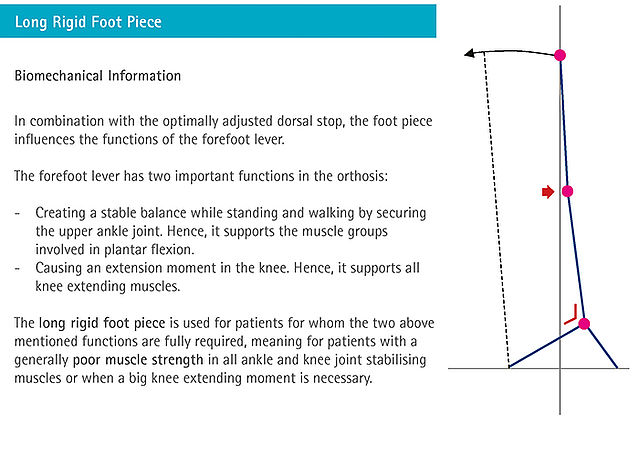
-
Reinforcing the Foot Piece
-
Fase 1/20

Reinforce the rolling-off area (arrows) of a rigid foot piece with carbon fibre band and a brim in order to increase the orthosis’ rigidity and prevent any movements.
Please note! Already consider the shape of the later worn shoe when reinforcing the foot piece in order to gain the best possible fit. The width, in particular, can hardly be adapted subsequently.
Note: If the brim should be too high, it can easily be adapted later on.Fase 2/20
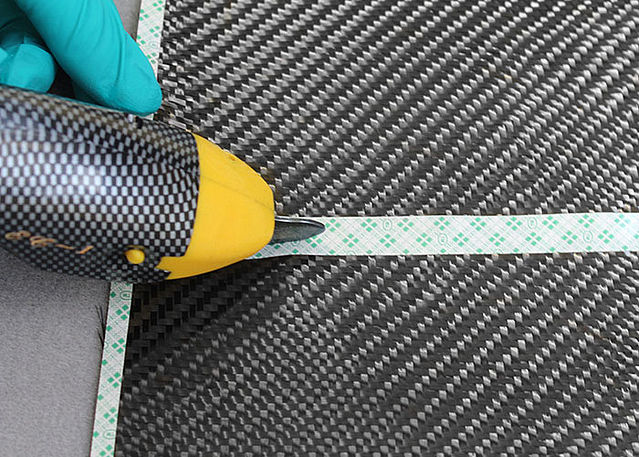
Please note! Due to the materials’ characteristics, always wear nitrile gloves while working with carbon or aramid fibre fabric.
We recommend using electrical scissors (e.g. Easy Cutter) to cut the separate fabric layers (carbon as well as aramid).
Note: Use adhesive transfer tape without backing material to secure the cutting edges. This way, the edges will not fray.Fase 3/20
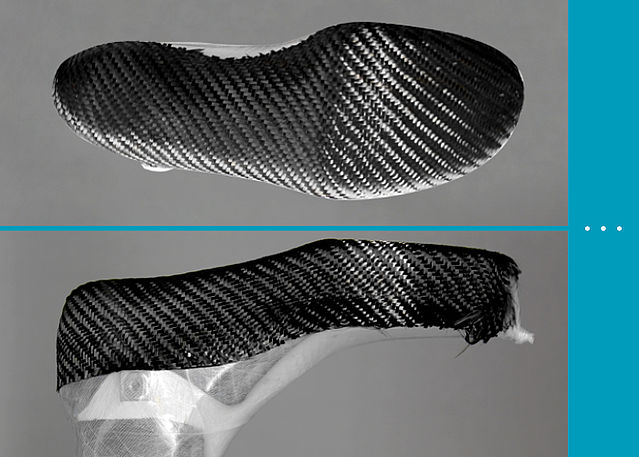
Scarcely cover a carbon fibre fabric pre-cut with adhesive spray and adhere it to the entire sole. At first, only reinforce the sole and the area below the joint retainer at the foot piece to avoid unnecessary thick edges and gain a high stiffness.
Note: Never spray the already adhered reinforcement, but only the pre-cut which still needs to be adhered.Fase 4/20
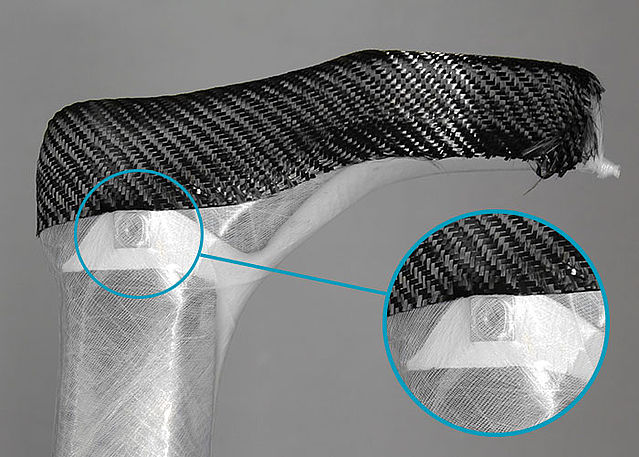
Spare the area of the joint retainer.
Fase 5/20
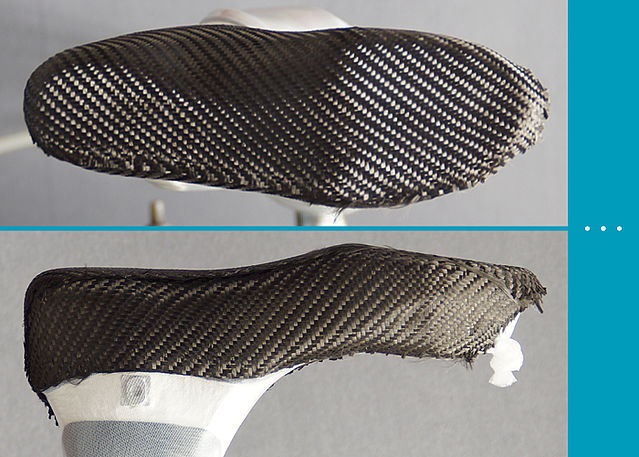
Then, progressively reinforce the medial and lateral rim in turns in such a way that the layers overlap the sole.
Use as many layers of carbon fibre fabric as you need (this is an exemplary picture).Fase 6/20
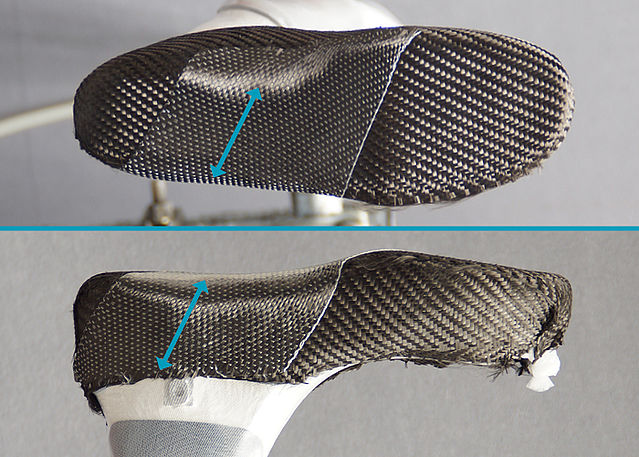
Attach unidirectional carbon fibre band diagonally below the joint retainer at the foot piece. Mind the direction of the fibres (arrows).
Please note! Always make sure to use the fibres stretched!Fase 7/20
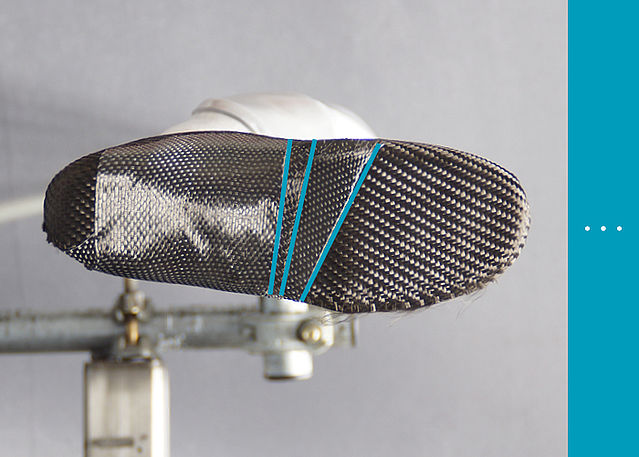
Attach the layers in a fan-shaped way, in order to avoid unnecessary edges and strengthen the heel area.
Use as many layers of carbon fibre band as you need (this is an exemplary picture).Fase 8/20
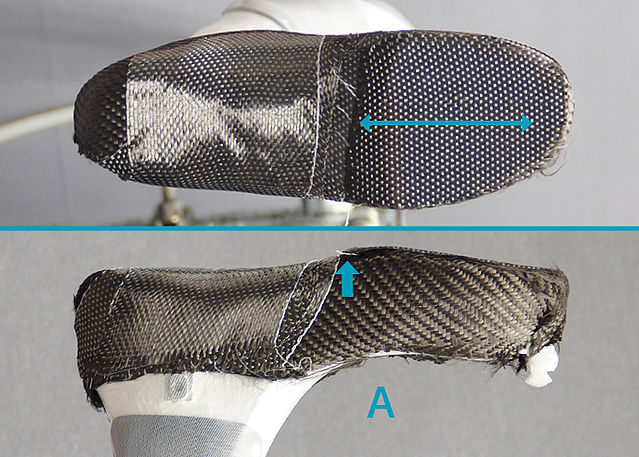
Reinforce the forefoot area with unidirectional carbon fibre band (e.g. 10cm width). Always reinforce up to the toes. Have the pre-cuts getting longer towards the heel to gain a smooth transition. Begin with the shortest pre-cut at height (A). Mind the direction of the fibres (arrow).
Fase 9/20
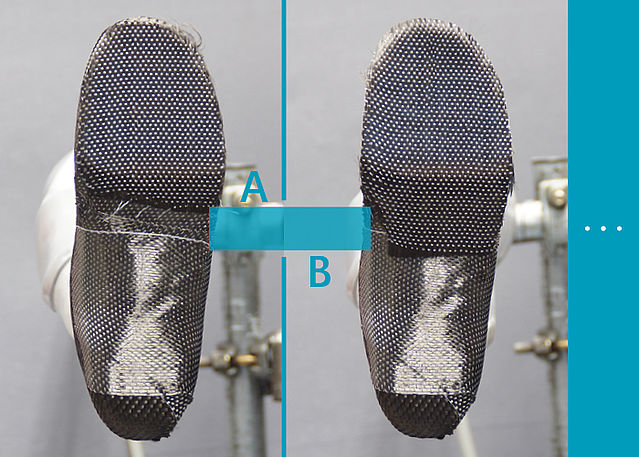
Attach the carbon fibre fabric and unidirectional carbon fibre band to form an ideal fibre composite. Have the pre-cuts getting longer towards the area between A and B, starting from the toes.
Fase 10/20
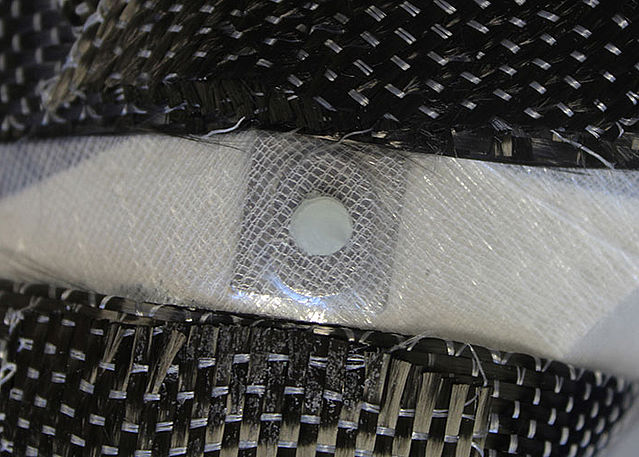
Apply some insulating wax to the threads of the joint retainers in order to seal them airtight for the following steps.
Fase 11/20
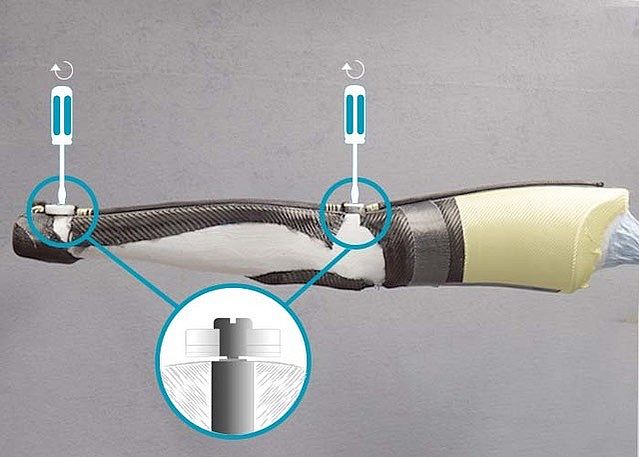
Mount the assembly/lamination dummies with the system strings to the joint retainers. Screw the retaining screws through the base film into the joint retainers. Make sure to screw in the screws only so far that they are gripped by the threads. This way, you can compensate a changed difference between the system joints.
ATTENTION! If screws have to be unscrewed again, the base film may be damaged in the process!Fase 12/20
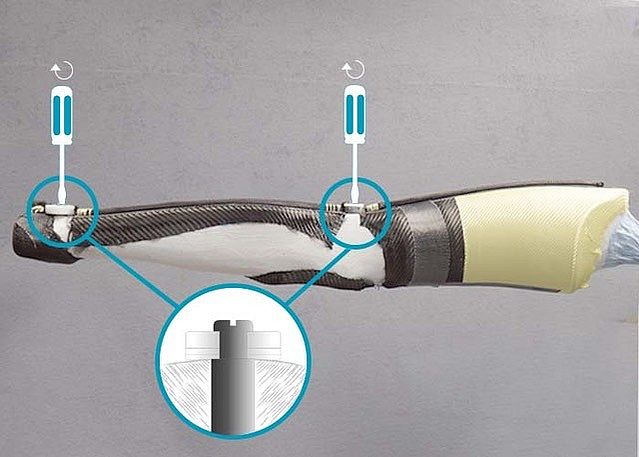
If the retaining screws are screwed in the joint retainers, you can tighten the screws entirely. Insulate all screw drives subsequently.
Fase 13/20
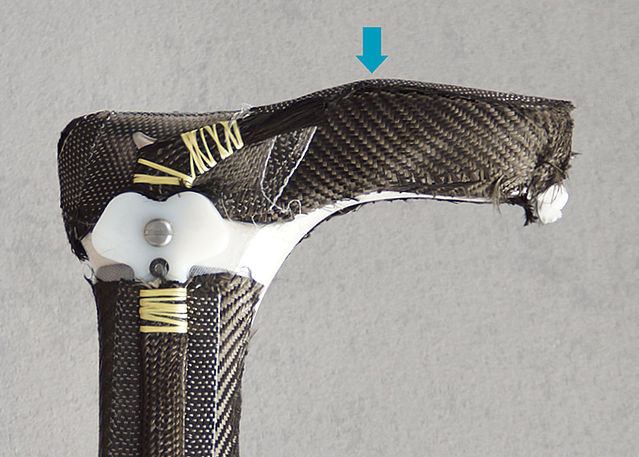
Attach the lower end of the carbon fibre braided tube with spray adhesive at the sole of the foot piece.
Fase 14/20
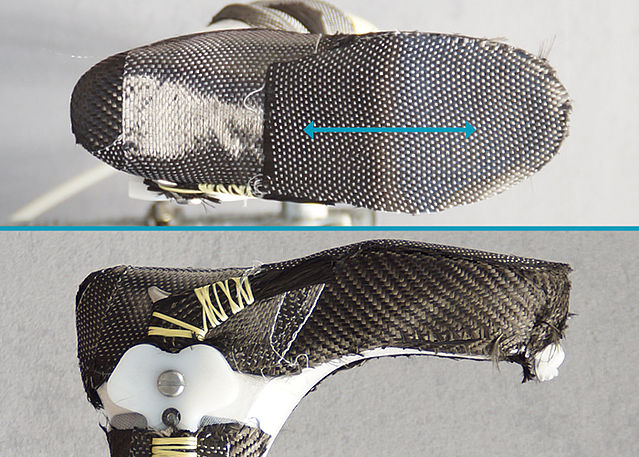
Keep on reinforcing with unidirectional carbon fibre band. Always reinforce up to the toes. Have the pre-cuts getting longer towards the heel to gain a smooth transition. Begin with the shortest pre-cut. Mind the direction of the fibres (arrow).
Fase 15/20
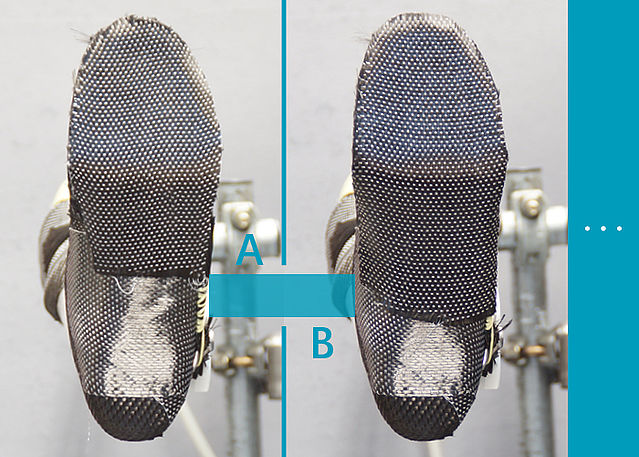
Have the pre-cuts getting longer towards the area between A and B, starting from the toes.
Fase 16/20
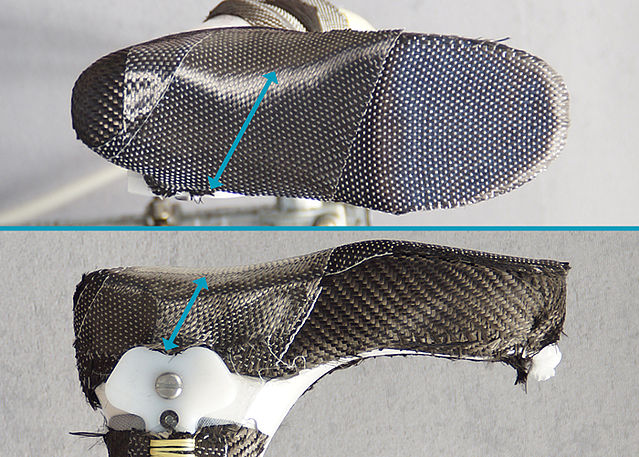
Attach unidirectional carbon fibre band diagonally below the joint retainer at the foot piece.
Please note! Make sure to use the fibres stretched!Fase 17/20
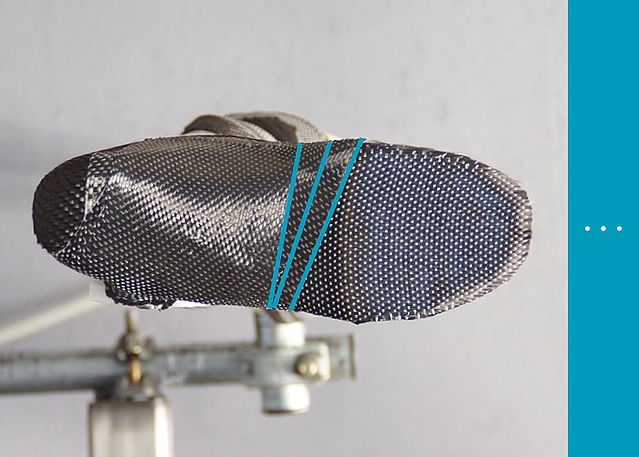
Attach more layers in a fan-shaped way. Use as many layers of carbon fibre band as you need (this is an exemplary picture).
Fase 18/20
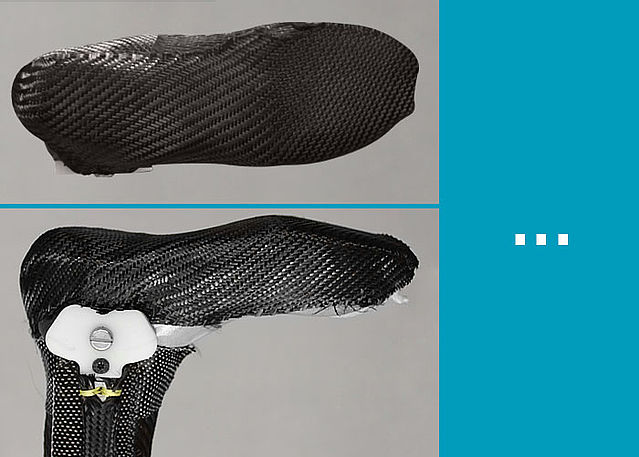
Continue reinforcing. Use as many layers carbon fibre fabric and band as you need for the foot piece (this is an exemplary picture).
Please note! Make sure to use the fibres stretched!Fase 19/20
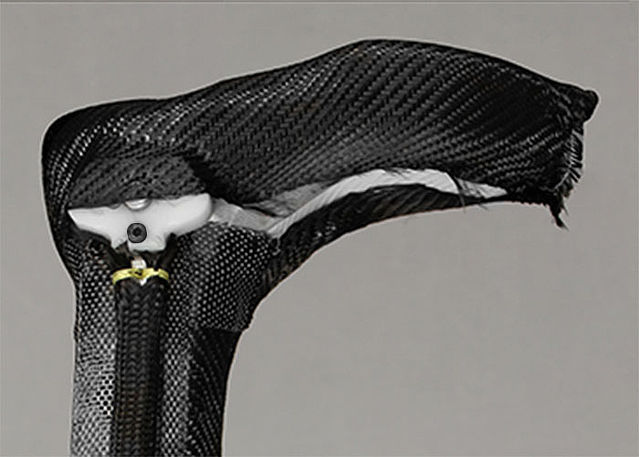
Attach a final layer of carbon fibre fabric to the foot piece. Cover half of the assembly/lamination dummy to avoid damaging the top foil later.
Please note! Make sure to use the fibres stretched!Fase 20/20
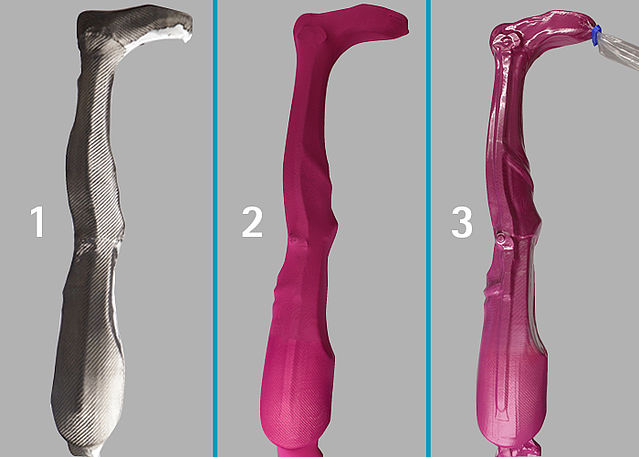
In order to secure the reinforcement layers, pull a decorative fabric (2) or a PA reinforcement stocking (for a carbon look) over the model (1). Thus, the PVA film tube can easily be pulled over as top film layer (3).
Note: We recommend using a 0.10mm thick film layer.



















-
Laminating the Foot Piece
-
Fase 1/3
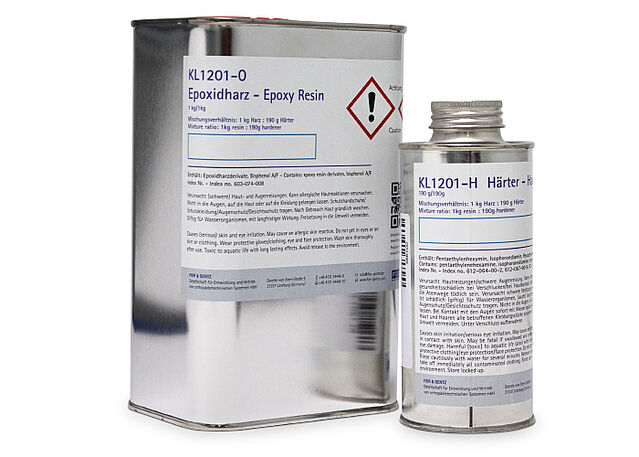
This production technique is specifically adapted to our epoxy resin and hardener.
Please note! Follow the processing instructions and the safety data sheet for our epoxy resin and hardener. Precisely stick to the mixture ratio and thoroughly mix resin and hardener.Fase 2/3
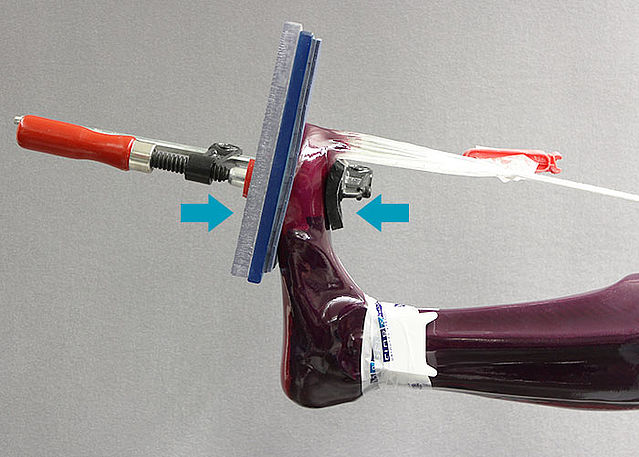
Let the fabrics soak completely and rub surplus resin out. Press out the foot piece in order to receive the highest possible fibre volume ratio. While doing so, protect the film with some padding material and make sure to maintain the form of the modified toe spring.
Note: Use available shaping dummies.Fase 3/3
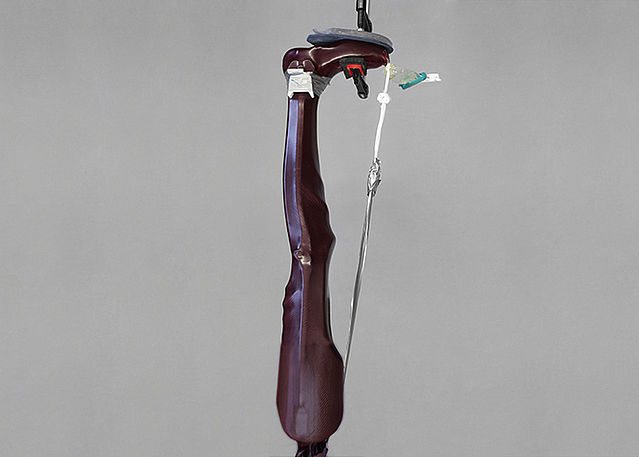
Let the model harden over night (at least 10 hours), under vacuum and at room temperature.
Please note! Also follow the processing instructions for epoxy resin.


-
Cutting the Foot Piece
-
Fase 1/2
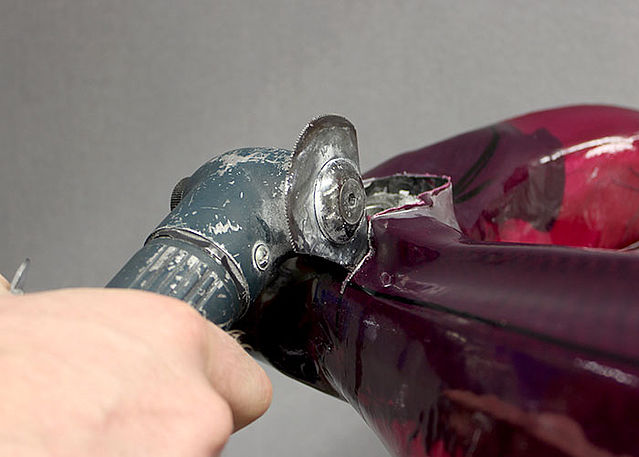
Use an oscillating saw to saw along the cutting edges in order to remove the orthosis parts from the model. You can see the recommended saw blade in the picture. Thus, you can saw very close to the system joint without damaging it.
Fase 2/2
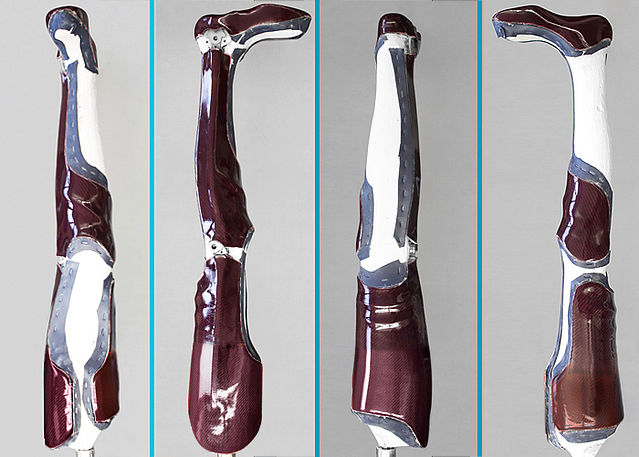
Remove all laminate parts which are no longer necessary. Then, you can remove the orthosis parts from the model.


-
Tempering and Grinding the Foot Piece
-
Fase 1/3
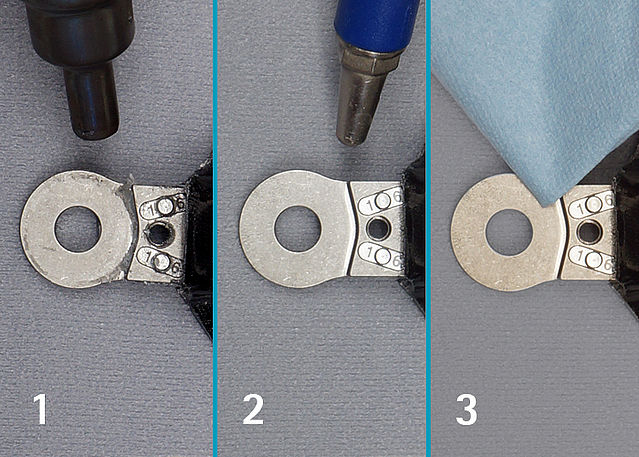
Clean all the joint areas as well as the system stirrup before you temper the parts of the orthosis. Heat all wax residues with a hot air blower (1) and blow the liquefied insulating wax out of the hollows (2). Remove all residues with a cloth (3). Remove the PVA film tube as well.
Fase 2/3
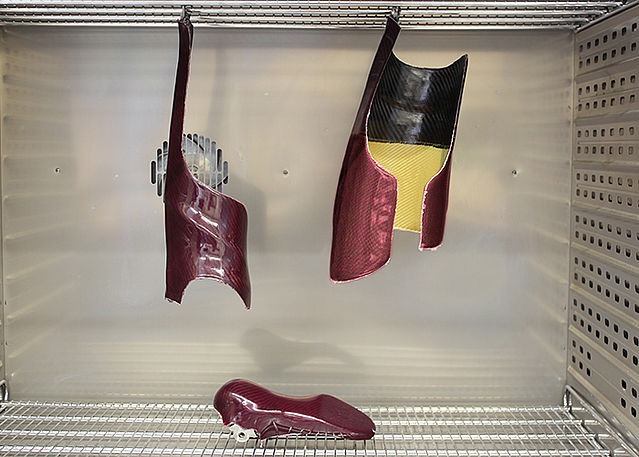
Temper all orthosis parts before grindig them. Place the orthosis parts into a cold convection oven and heat it up slowly. When tempered, the orthosis parts are stable and can be worked in the best possible way.
Please note! Also follow the processing instructions for epoxy resin.Fase 3/3
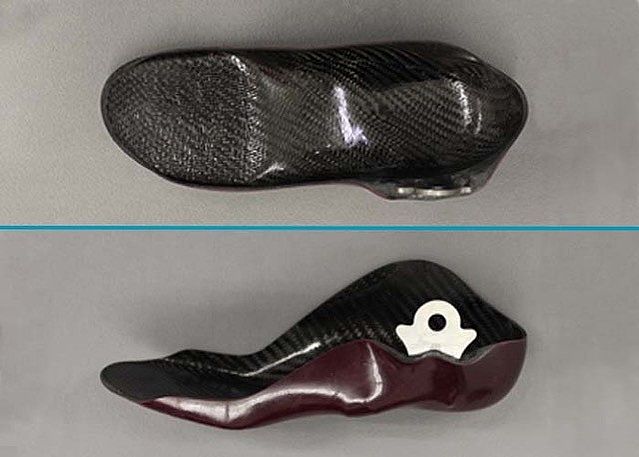
Grind the edges of the orthosis parts (e.g. with a belt grinder). However, it is essential to avoid predetermined breaking points in the metal!
Note: Apply some insulating wax to the aramid fibre edges and grind it with coarse sandpaper subsequently.


Last Update: 07 May 2020